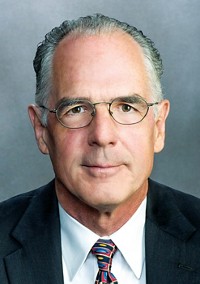Advertisement
Grab your lab coat. Let's get started
Welcome!
Welcome!
Create an account below to get 6 C&EN articles per month, receive newsletters and more - all free.
It seems this is your first time logging in online. Please enter the following information to continue.
As an ACS member you automatically get access to this site. All we need is few more details to create your reading experience.
Not you? Sign in with a different account.
Not you? Sign in with a different account.
ERROR 1
ERROR 1
ERROR 2
ERROR 2
ERROR 2
ERROR 2
ERROR 2
Password and Confirm password must match.
If you have an ACS member number, please enter it here so we can link this account to your membership. (optional)
ERROR 2
ACS values your privacy. By submitting your information, you are gaining access to C&EN and subscribing to our weekly newsletter. We use the information you provide to make your reading experience better, and we will never sell your data to third party members.
Policy
TSCA reform and changing our practice of chemistry
by Anthony Noce, Chair, ACS Committee on Environmental Improvement
May 16, 2016
| A version of this story appeared in
Volume 94, Issue 20
The vision of the ACS Committee on Environmental Improvement (CEI) is “a sustainable world enabled through the sustainable practice and use of chemistry.” We work to accomplish this through our mission to “advance sustainability thinking and practice across ACS and society for the benefit of Earth and its people.” At this time, I can think of no more important focus for our efforts to achieve a sustainable chemical enterprise than the effective implementation of an amended Toxic Substances Control Act (TSCA).
The state of science has outstripped the original TSCA passed 40 years ago. An amended TSCA has not yet been enacted into law as this commentary went to press, but all signs point to agreement on TSCA reauthorization this year. This is good, as a great deal is riding on Congress getting TSCA right.
At its heart, TSCA reform is all about good business practices and harnessing industry’s ability to develop data to provide the Environmental Protection Agency and the public with the information needed to make informed decisions about chemical safety. It recognizes the promise of moving from our current animal-based testing approach to a more informative and efficient Toxicology in the 21st Century (Tox21)-based approach. Tox21 is a collaboration among several federal agencies to develop better toxicity assessment methods to quickly and efficiently test whether certain chemical compounds have the potential to disrupt processes in the human body that may lead to negative health effects. The transition to a Tox21-based approach will take place over time as the technology evolves and is shown to be as good as, or better than, the current approach and confidence is gained that the technology can be safely applied.
There is a focus on EPA stipulating outcomes, time frames, and other measures of success, as well as holding the agency accountable for implementation, but TSCA has major implications and benefits for all associated with the chemical enterprise. The proposed provisions will have major impacts on the research, funding, and work of various government agencies, universities, industries, and nongovernmental organizations (NGOs). Much needs to be done across the chemical enterprise. Chemists need to be involved if we are to develop, evaluate, and apply the tools, techniques, and assessment approaches necessary to realize the promise of a modernized TSCA that provides for an efficient and informative “fit for purpose” chemical safety program.
Turning the vision of a reformed TSCA into reality as a more practical and efficient regulatory model will require sustained funding for efforts across the entire chemical enterprise to create the capacity to implement the law effectively. This will require developing the means to target our testing and safety evaluation on the information needed using human-focused, predictive tests rather than a check-box list of largely uninformative animal tests. Once this new system is in place, there will be huge savings in testing costs that will more than justify the up-front costs needed to develop the capability to conduct informative and efficient testing.
As chair of CEI, I would ask that ACS members engage at a variety of levels to help move toward a more sustainable practice and use of chemistry. One way to do this is to regularly engage with your government leaders and elected representatives on scientific issues, particularly in light of the newly formed Congressional Chemistry Caucus. All too often there is a huge gap between scientists and policy-makers, and it takes more than an occasional briefing to be viewed as a resource—and even more than that to get the commitment of policy-makers. Ongoing dialogue focused on the issues in simple direct terms is required to convey how science can best be used to implement TSCA and why sustained funding for the implementation of a modernized TSCA, particularly with regard to chemical screening and follow-up testing, is important for public health, the environment, and our economy. Useful benchmarks need to be created against which progress can be measured to show that the investments in research and development have paid off in terms of a more efficient and informative chemical management regulatory program.
We need to convey that even though science is essential to a better future, efforts proceed at different time frames. It is important to set reasonable expectations for EPA and others to avoid setting them up for failure. Working in concert with other stakeholders with different goals and priorities such as the National Institutes of Health, the Food & Drug Administration, universities, NGOs, and the private sector, EPA has made great progress in realizing the vision for toxicity testing in the 21st century. Identifying chemicals that may be of concern and what testing is needed to see if those concerns are real requires a continuing commitment from all to screening chemicals on the TSCA inventory for biological activity and interpreting that activity to empower more effective and rational chemical management.
Developing the means to use state-of-the-art approaches to inform regulatory decisions will take time and require much higher confidence in the approaches than currently exists. EPA will need to work with its current scientific partners and also expand its efforts to address the social, economic, and legal communities in lockstep with the science. It is reasonable to expect that this will take time and that it will involve setbacks. ACS members can help the agency stay the course by recognizing this reality and helping to support and communicate the progress toward a more sustainable testing approach while creatively engaging others to overcome the obstacles to full implementation. Let’s take this opportunity to change our practice of chemistry for the better.
Views expressed on this page are those of the author and not necessarily those of ACS.





Join the conversation
Contact the reporter
Submit a Letter to the Editor for publication
Engage with us on Twitter